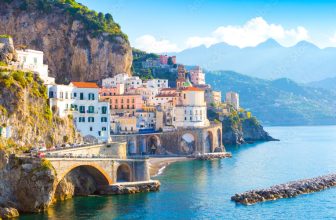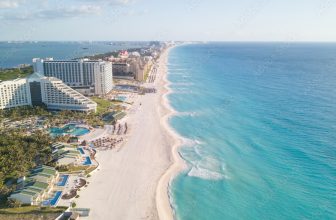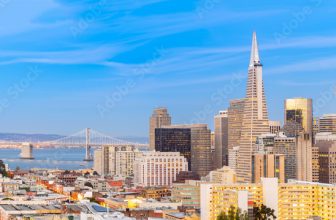
Located in the Catalonia region of Spain, Barcelona is the cosmopolitan capital of the country. The city is known for its architecture and art. Some of the city’s modernist landmarks include the Sagrada Famlia church and the Fundació Joan Miró. There is also an archeological museum called MUHBA, which features ancient Roman sites. The city has much to offer tourists from all over the world.
Las Ramblas
If you’re planning a trip to Barcelona, don’t miss visiting La Ramblas, a tree-lined pedestrian street in the heart of the city. It stretches for 1.2 kilometers and divides several neighbourhoods. You’ll find it difficult to get bored strolling along its broad, lively streets. And if you want to get a feel for Barcelona’s culture, you can take a walk down its famed Catalan-style restaurants and cafés.
The main street of the city, Las Ramblas, is pedestrian-only. Although there are a few parking spaces and single-lane traffic, getting around the area on foot is highly recommended. The Ramblas is Barcelona’s cultural corridor, with a fascinating mix of uses. Getting lost in its streets and soaking up its atmosphere is one of the best ways to fully experience the city. Here are some tips for exploring this lively area.
The iconic street market La Boqueria is one of the highlights of Las Ramblas. The market is the perfect place to buy local products, or just experience the vibrant atmosphere of Barcelona’s market life. The world-famous Liceu Theater is a landmark in Barcelona, located right next to La Rambla. Other attractions on the street include famous bars, restaurants, and Gaudi’s masterpieces. The lower part of the historic Rambla is now a tourist destination.
The infamous El Corte Ingles is another must-visit. Located near the Columbus Monument, this massive department store is filled with local artists selling their wares. If you’re looking for something special, you can even get yourself cartooned by a professional. The café atmosphere is a popular place for tourists, but you’ll have to pay more here than in other nearby bars. There’s plenty to keep you occupied.
La Boqueria
The Mercat de Sant Josep de la Boqueria, often referred to as La Bouqueria, is an enormous public market in Barcelona. It is located in the Ciutat Vella district of the city. The market is one of the most iconic landmarks of Barcelona. It is accessible via La Rambla, the street that leads to the opera house and Liceu. Here, you’ll find a diverse array of products for sale.
Visitors and locals alike flock to La Bouqueria for fresh fruit and vegetables, as well as meat products and locally made finished goods. Food stalls line the entire length of the market, and you’re sure to find something delicious and exotic here. Whether you’re hungry or just want to relax, there’s something to please every palate in this lively market. From smoked fish to freshly cut fruits and vegetables, you’ll find everything you’re looking for here.
The official name of La Bouqueria is Mercat de Sant Josep de la Boqueria, and it has been a popular spot for market shoppers since medieval times. The market’s current name is thought to have been coined from the Catalan word for goat. Today, the market features more than 300 shops, including the famous boqueria bakery. In addition to buying fresh produce, La Bouqueria also sells fish, meat, and other specialty items.
The food markets at La Bouqueria are a must-see in Barcelona. Not only do they have a large variety of goods, but they are also a central part of the city’s economy. Whether you’re looking for a delicious meal, a souvenir, or a gift for someone, La Boqueria is sure to please any palate. A trip to Barcelona’s boqueria will delight you and your taste buds.
Antoni Gaudi’s La Sagrada Familia
This incredible cathedral was built by Catalan architect Antoni Gaudi. The Sagrada Familia project was started in 1882 and is currently under construction. The building was started without a permit and construction has been ongoing for the past century. However, the foundation has already paid the city $41 million for work that was already done. The church is expected to be completed in 2026.
The architectural design of the Sagrada Familia is a work of art and symbolism. While religious symbolism is obvious, it is not the only reason to visit this unique structure. For instance, the structure’s pillars resemble trees and change shape in different directions when you walk or move. The pillars are also held up by tortoise and turtle symbols. These animals represent the Earth and the sea, which is significant since the Sagrada Familia is based on the earth.
While Gaudi was still alive, he was unable to finish all of the work. He was a man of religion and devoted himself to this project until his death at the age of 75. However, the work on the Sagrada Familia was completed in his lifetime. By the time he died, the building was about 25 percent completed. While Gaudi had the vision to build a grand cathedral, it would have taken him decades to complete.
The Nativity facade was the most important part of the Sagrada Familia. Its intricate carvings were created by Gaudi while he was working. The Nativity facade was completed in 1930 and is the most beautiful and delicate of the seven buildings. Its main entrance will be the Glory Facade. A tram ran over Gaudi three days before his death. The rest of the facade was completed in 1931.
Antoni Gaud’s Fundacio Joan Miro
In Barcelona, Catalonia, the modern art museum Fundació Joan Miro is a must-see. Located on the Montjuc hill, it is a perfect place to experience some of the world’s most stunning modern art. The museum is filled with stunning pieces by world-renowned artists, including Picasso, Miró, and Dali. Whether you’re looking for a new perspective on art, or to discover the history of Catalonia, this is the place to go.
For the best experience, visit the Fundacio Joan Miro in the early morning. The museum opens early in the morning, so you can beat the crowds. You can also enjoy the terrace views in the evening. Most visitors spend sixty to 90 minutes exploring the art in this museum. If you’d prefer to spend more time exploring the space, you can also download a free multimedia guide to accompany your visit. This guide features additional content and unpublished material from the archive. The audio guide is available in three languages.
The Fundacio Joan Miro was founded in memory of the late Barcelona artist, Joan. It is dedicated to contemporary art, and hosts both temporary and permanent exhibitions. The foundation’s collection includes more than 10,000 works of art by the artist. The collection is exhibited in multiple countries. This way, you can see many of his most celebrated works. Don’t forget to visit the Fundacio Joan Miro and learn more about the artist’s life and work.
Fundacio Joan Miro in Barcelona houses a stunning collection of Catalan artwork. The building was designed by Josep Lluis Sert and is a major piece of Rationalist architecture. This museum should be on your itinerary when visiting Barcelona. It is worth a visit if you’re a first-time visitor to the city. It’s one of the greatest pieces of modern art in Barcelona.
Ildefons Cerda’s Eixample
The Eixample district is the heart of Barcelona. Its 900 city blocks, all cut at 45 degrees, were designed by Catalan architect Ildefons Cerda. The district includes some of the most famous works by Antoni Gaudi, such as Casa Mila and Casa Batllo, as well as Mies Van der Rohe’s Barcelona Pavilion and Torre Agbar. While the Eixample district has evolved since its creation, it still retains some of its original character.
During the early 20th century, the streets of Barcelona were narrower than today. In order to accommodate motor vehicles, Cerda made the streets wide and chamfered corners. He also implemented strict economic principles and building bylaws, but the Spanish government did not ratify them. Because of this, a number of modern cities have similar zoning and design principles.
The Eixample in Barcelona is a district that was created after the city’s medieval walls were torn down. Ildefons Cerda is a very important figure in Catalan history, but he is not well-known outside of Europe. Despite his radical ideas, he was widely ridiculed for his plans. But the work of Ildefons Cerda has remained prominent in the city’s urban planning today.
One of the most notable features of the Eixample district in Barcelona is the unique grid pattern that permeates it. The area’s unique hexagonal blocks create a striking pattern that is easy to identify. Cerda’s work has inspired countless other architects around the world. In addition to being a landmark in Barcelona, Ildefons Cerda’s work is a defining factor in the architectural history of the city.






